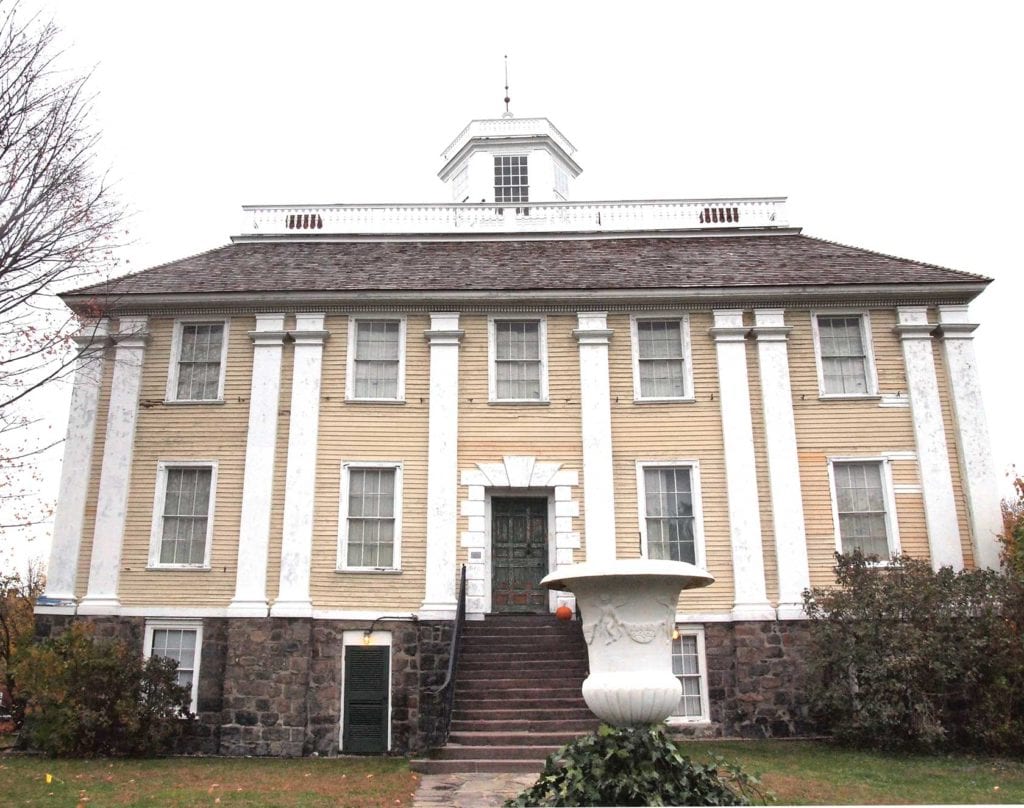Roxbury’s Historic Shirley-Eustis House receives funding for carriage house preservation

In the middle of bucolic 1700s Roxbury sat Shirley Place, a royal governor’s mansion visited by Boston elites. Nearly three centuries later, a carriage house reflective of Roxbury’s transportation in the 1800s was relocated to the site as an addition to the property and has been maintained by The Shirley-Eustis House Association (SEHA) ever since. To aid in its ongoing preservation, the SEHA successfully secured $40,000 in grants from the city to repair Ingersoll-Gardner Carriage House for events and educational tours.
The money was awarded to the SEHA by the Boston Community Preservation Commission and is dedicated to the repair of the carriage house’s roofing. The carriage house is dedicated to the preservation of history and educational activities in Roxbury.
“It’s a real community venue,” said SEHA Director Suzy Buchanan. “We get a lot of local community organizations that use it for dramatic presentation, and for lectures,” she told the Banner.
The re-roofing is slated to take up to six weeks, as SEHA focuses on virtual events and outdoor-only tours. Their next webinar, on Sept. 15 and 24, focuses on Black men who fought in the Revolutionary War.
The SEHA Buildings and Grounds Committee, led by Bill Finch, is “always taking a long-term view of the preservation of the property,” Buchanan said. Over the last few years of repairs for the mansion, the SEHA took on a heavy financial burden.
“It meant that a lot of money was diverted from programming that we could’ve been doing,” Buchanan said.
The award from the preservation commission releases funding for future programming once the carriage house reopens.
“We also plan to make the barn a more visible and widely used neighborhood asset in 2020 through an expanded rentals program and increased collaboration with Roxbury’s other non-profit entities,” the SEHA’s grant application reads.
In the Colonial era, the area was rural, lined with wealthy farms and mansions. Buchanan calls the grounds of the carriage house a “microcosm” of Roxbury 200 years ago, but filled with the people of today’s Roxbury — families using the outdoor space for cookouts, students from Dudley Street Neighborhood Charter School touring the grounds and playing during gym class.
The Black Cotton Club, a black artists’ collective, held their last in-person jam session in the carriage house last fall, and History at Play has put on plays highlighting women in Massachusetts’ history.
“It’s so important that places like this receive funding, not only to secure permanence and the safety of the construction itself, but to also work on bringing these venues that have a greater accessibility for folks who may be … underserved, specifically in the Roxbury community,” said Judith Kalaora, founder and performer at History at Play.
Kalaora has performed the story of Deborah Sampson, a woman who secretly fought in the Revolutionary War, twice in the carriage house, and is currently developing a program about Lady Diana, Princess of Wales.
“We are hopeful to have a program about female athletes that will include people of color,” she said when asked about performance possibilities post-COVID-19 closures.
Designated a National Historic Landmark by the secretary of the interior, the Shirley-Eustis mansion has seen guests such as Benjamin Franklin and John Quincy Adams. It was built in 1747 for William Shirley, the royal governor of the province of Massachusetts Bay, and was saved from demolition in 1985. Its carriage house was relocated from a historic estate in Brookline and reconstructed in 2000.
Buchanan looks forward to reopening both the carriage house and the mansion once COVID cases subside in the area.
“It’s been a tough year here in Roxbury, [being] hit really hard by COVID,” she said. “Especially for certain nonprofits like us, where being there is the magic of the experience.”







